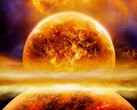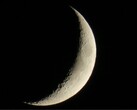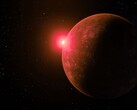Our Sun usually flings out massive amounts of material. These ejections are called Coronal Mass Ejections (CMEs). CMEs are so powerful that they determine space weather. Astronomers have been trying to determine definitively whether other stars also produce CMEs, and finally, they have.
Joe Callingham of the Netherlands Institute for Radio Astronomy (ASTRON) and his team carried out this research. They used the ESA’s XMM-Newton space observatory and the Low Frequency Array (LOFAR) radio telescope to spot a CME coming from a star about 130 light-years away.
When CMEs travel out from a star into interplanetary space, a burst of radio waves is produced. The team used LOFAR to pick up the radio signals. They then used ESA’s XMM-Newton to determine the star’s temperature, rotation, and brightness in X-ray light.
The star that produced the CME is a red dwarf. It is much cooler than our Sun. In size, it is also very different from our Sun. The red dwarf’s mass is about half that of our Sun. It has a magnetic field 300 times more powerful and rotates 20 times faster. The CME it produced is also moving at an incredible speed — 2,400 km per second. Only one out of every 2000 CMEs from our Sun has been observed to travel this fast.
This discovery has opened up a new layer in the search for life outside our solar system. Astronomers now have data from another star to use in understanding the effect of CMEs on potentially habitable exoplanets. This study was published in the journal Nature.




















